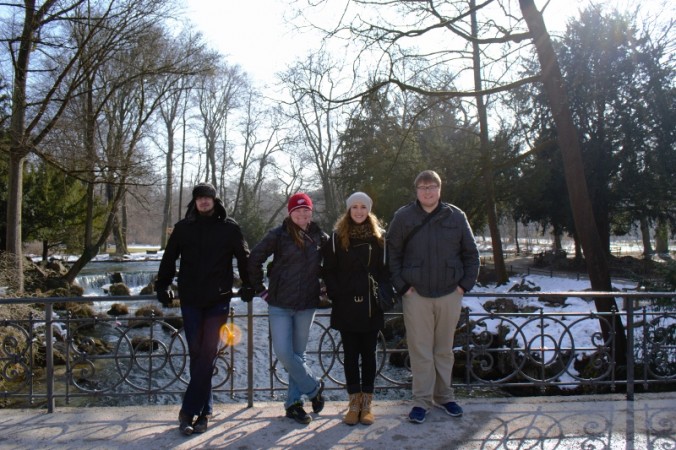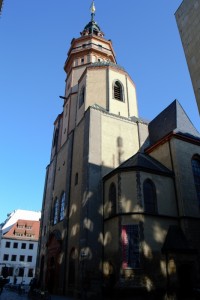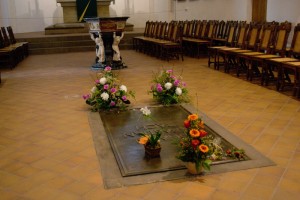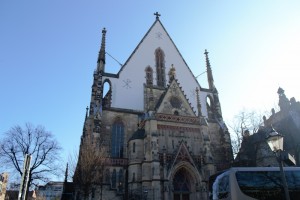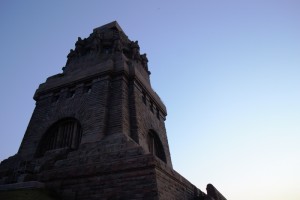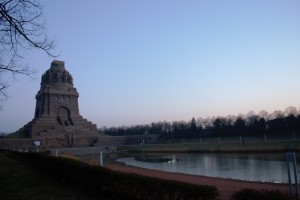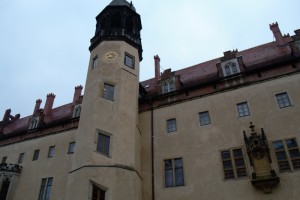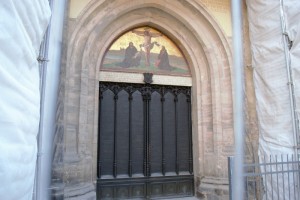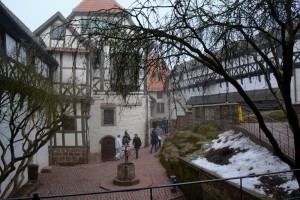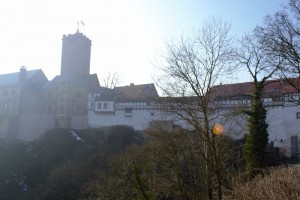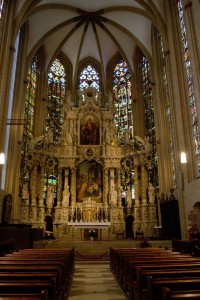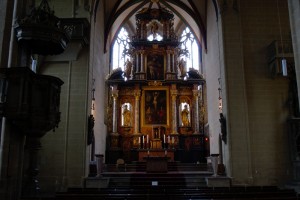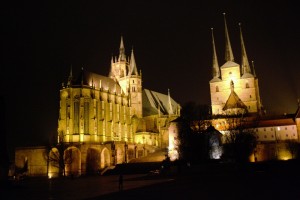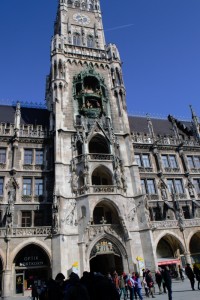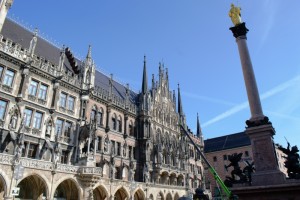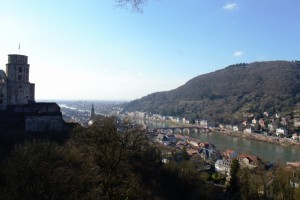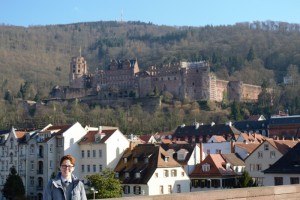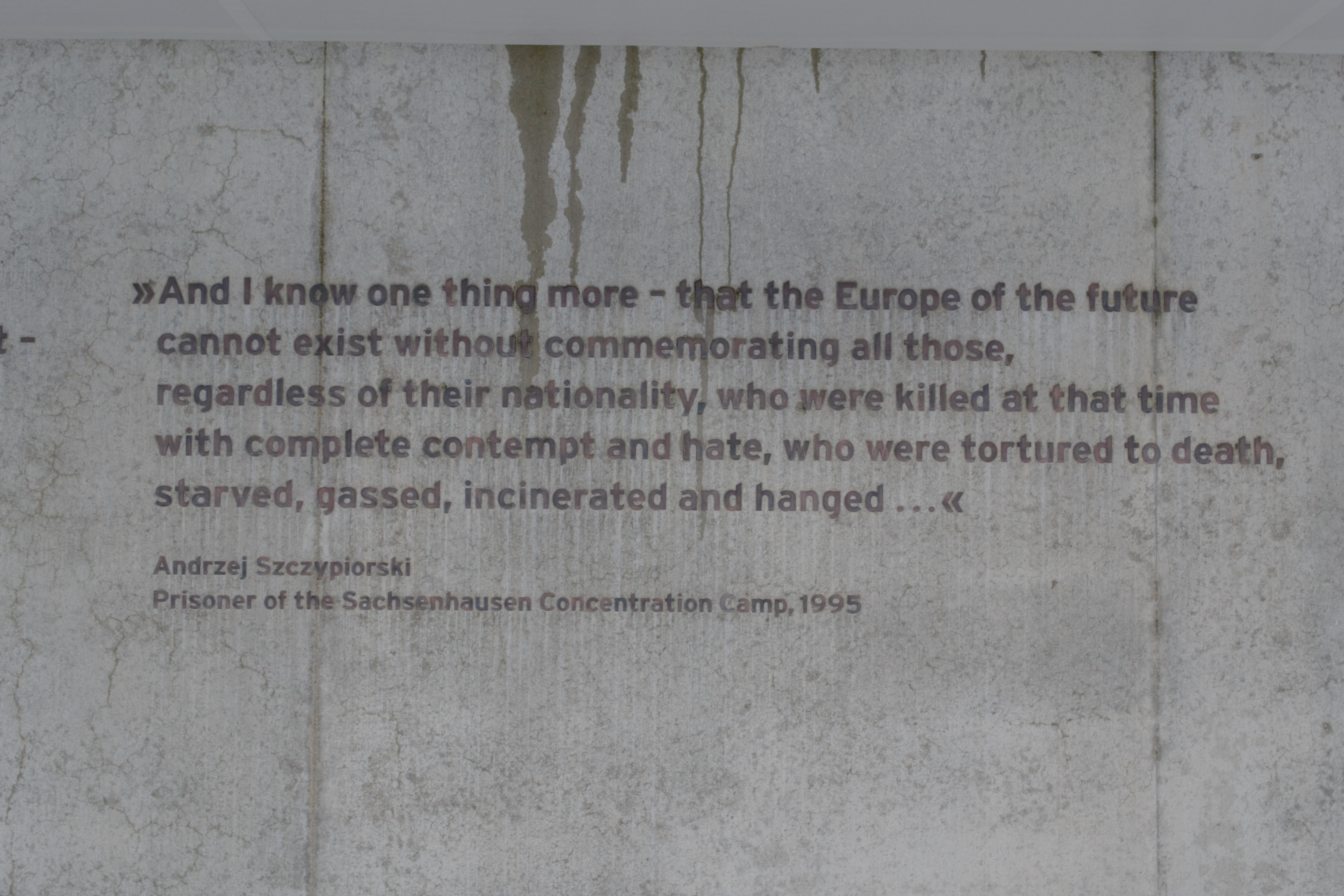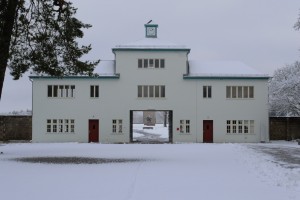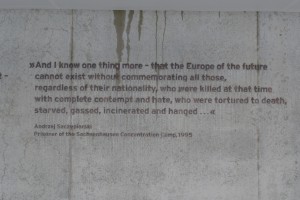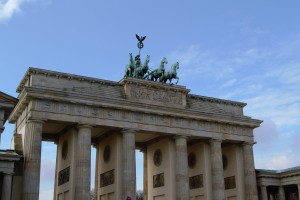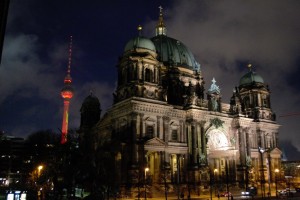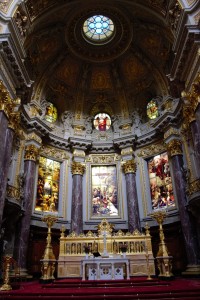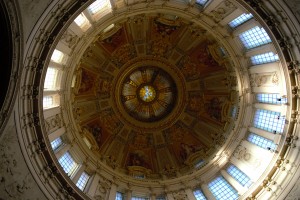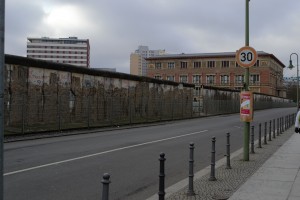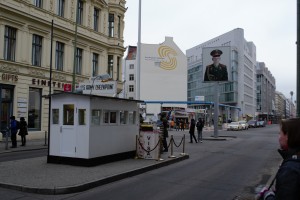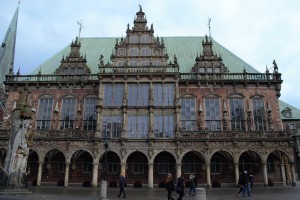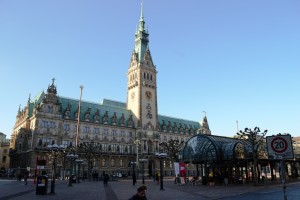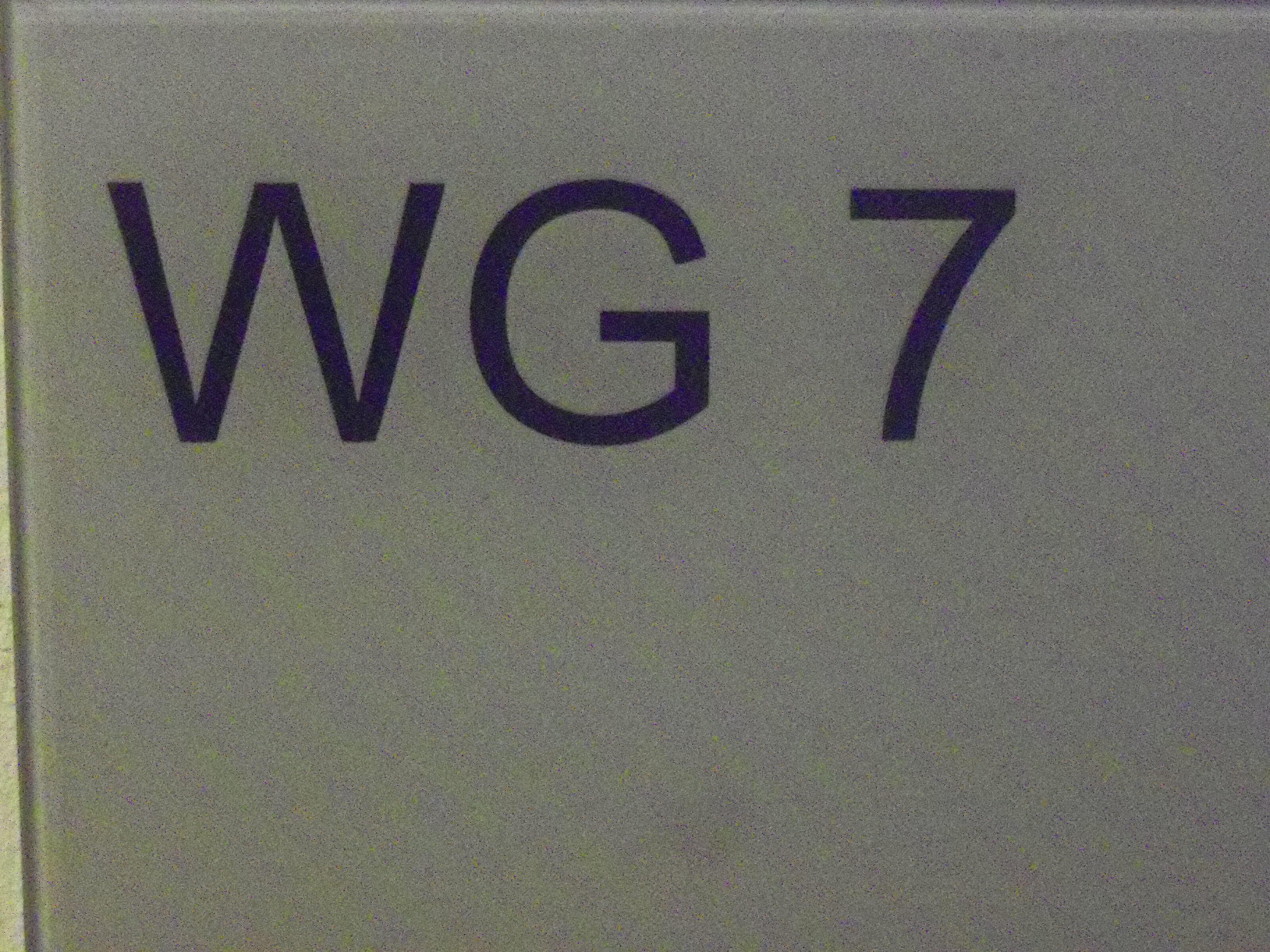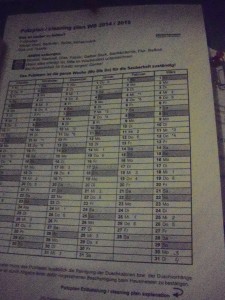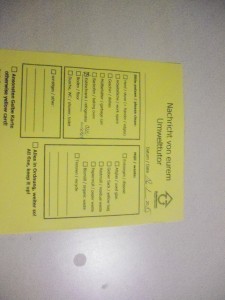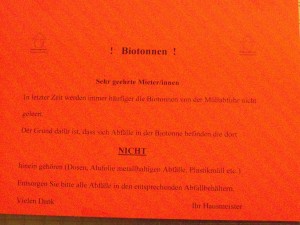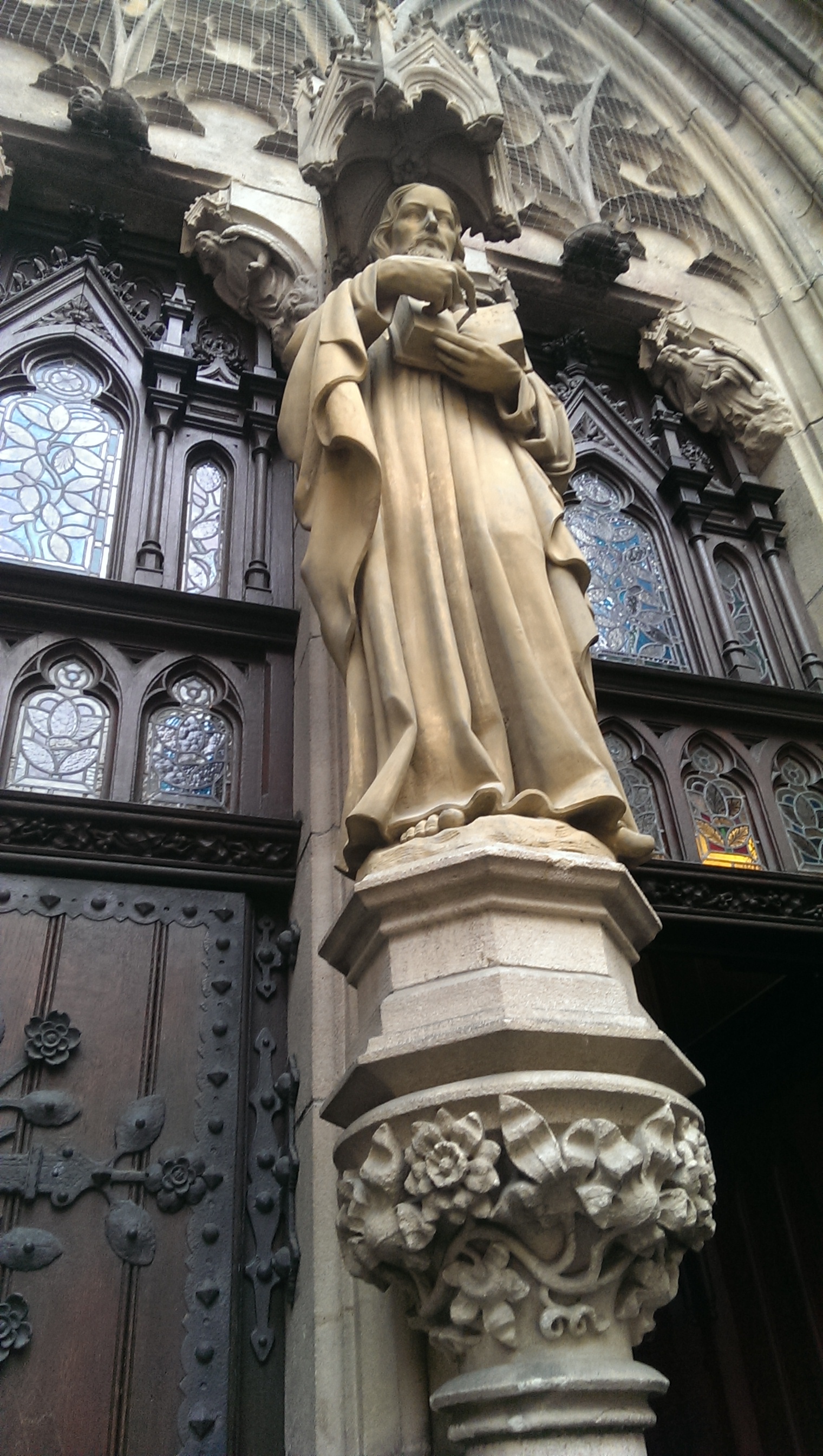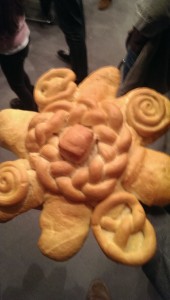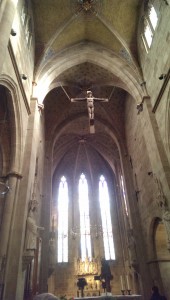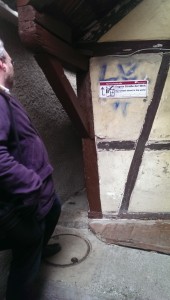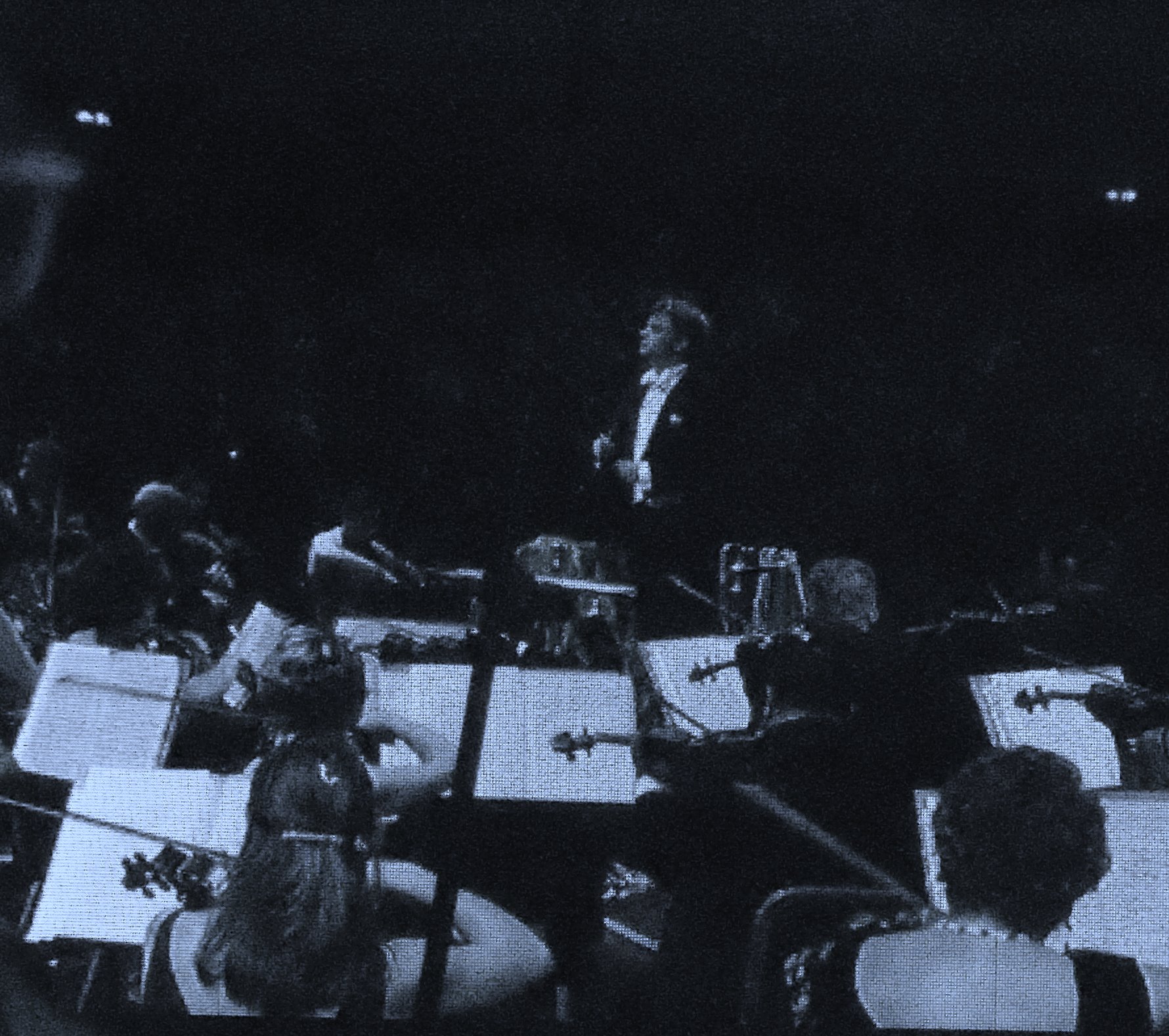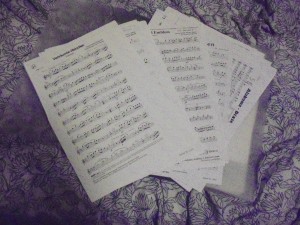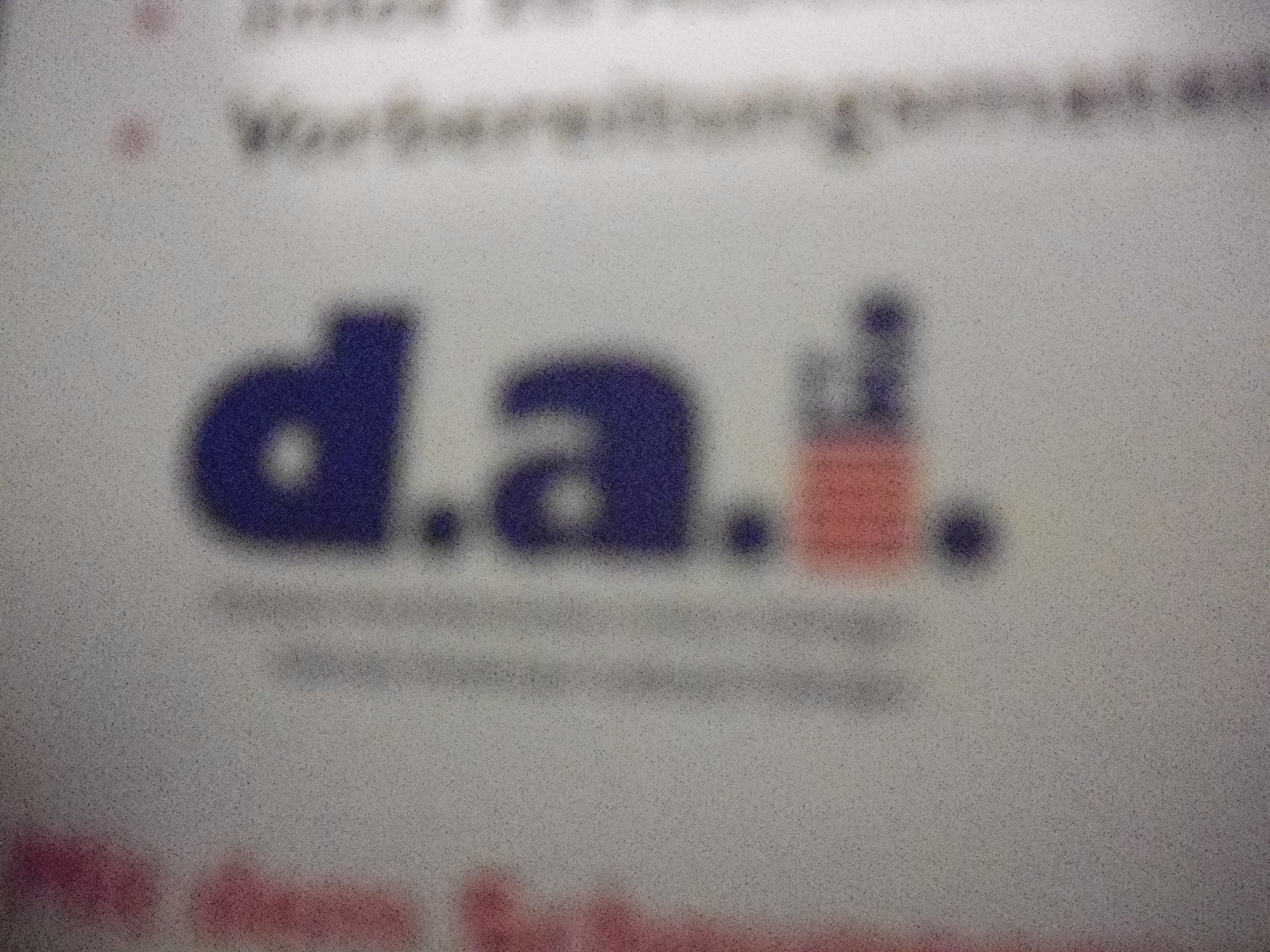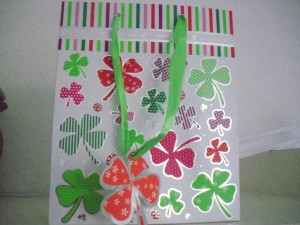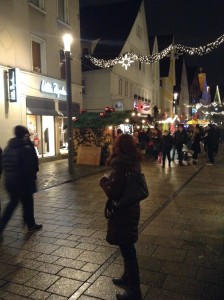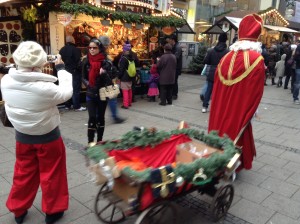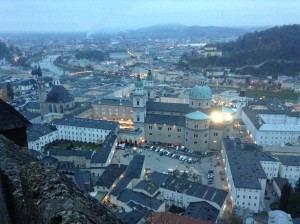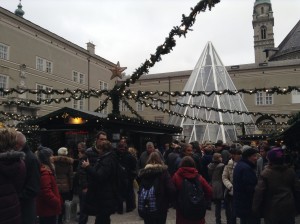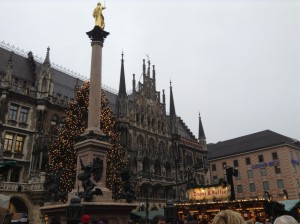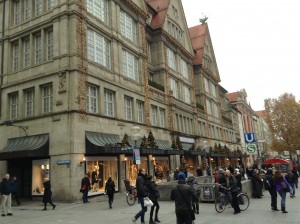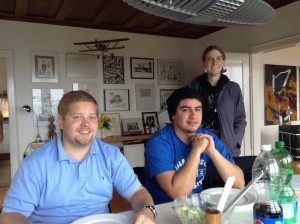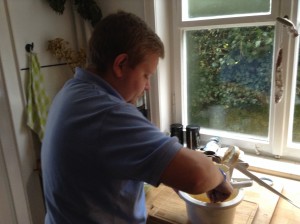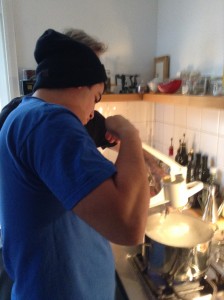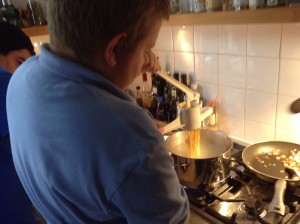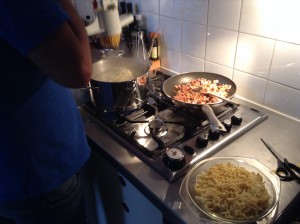Hello everyone! I know, I know, I have been really lazy and haven’t posted anything in a while. Myself along with the rest of the group have been super busy with traveling and preping for our spring break in 3 weeks time. Our first stop a while back was the musical center of Leipzig in Saxony. Liepzig was incredible and rich with culture and history every where you looked. While in Leipzig our group visited the Nikolaikirche in Leipzig which not only has historical significance to Johann Sebastian Bach but also to the Monday Demonstrations in the late 1980’s demonstrating against communist rule.
This is the outside of the Nikolaikirche (they wouldn’t let me take photos inside) but the inside of it is very beautiful with large white vaulted cielings and greek columns lining the nave that look like they have coconut tree leaves sprouting to the top of the cieling. We also got to see the Thomaskirche which is the final resting place of Johann Sebastian Bach. Also we were privaledged to listen to a concert on Bach’s works at the Thomaskirche. The concert was absolutely beautiful simply put. The music in general in Leipzig was fabulous. Everywhere you looked their were street performers either playing violins, guitars, accordions, or all three! (Not really because people don’t have enough hands but that would be pretty cool though).
While in Leipzig, the group also visited the Johann Sebastian Bach Museum located directly across the street from the Thomaskirche. The museum was very fun and informative because of how interactive it was. Also the museum housed a belt buckle and thimble that are supposedly from the original coffins of Bach and his wife Maria Barbara at their original burial places. Also while in Leipzig I visited the Battle of Nations Monument on the northern side of Leipzig. The Battle of Nations Monument is a monument commemorating the combined defeat of the Napoleon in 1813 by the nations of Prussia, Austria, Russia, and Sweden.
Personally the size of the monument took me completely by surprise. From pictures I saw before going I thought that it was going to a lot smaller but it is truly massive. Where the monument stands is supposedly were Napoleon stood himself during the battle (so the story goes). Overall, Leipzig was a college city with fantastic music everywhere you listened.
Our group also visited the massive (joking) city of Wittenberg for a day trip to see Martin Luther’s home as well as the castle church where Luther (supposedly) posted his 95 theses on the castle church door. The doors are unfortunately not original because the original doors burned down in a fire. These doors happen to be bronze and inscribed on them are the 95 theses. This also means that these doors have 95 doctorates in theology (sorry, bad joke).
After Leipzig and Wittenberg our group had another fun day excursion to Eisenach where we visited the Wartburg castle. At the Wartburg castle, Martin Luther was ‘kidnapped’ and taken there by Frederick the Wise’s men for Luthers own protection after the Diet of Worms. The Warburg castle also happens to be the spot of the Wartburg Festival in 1817.
Eisenach also was home to the first Bach museum, that was for a while believed to be Bach’s own home. However this was disproven recently, but never the less it is still a great museum. One exhibit was Benjamin Franklin’s own glass harmonica.
The last stop on our Luther and Bach trip was Erfurt. Erfurt was amazing, not only because of St. Mary’s Cathedral, but also because they had amazing Thuringian sausages at a local stand for only 1 Euro! That is a deal that even Vince from Sham Wow could sell me on.
We also saw the St Severus Cathedral that happens to lie directly adjacent to St. Mary’s.
After our group trip. Myself along with Raechel, Morgan, and Jared went to Munich. Let me tell you folks. Think of all of the possible German stereotypes possible, then close your eyes. Congratulations you are in Munich! Munich was by far my favorite place I have been. The people, the scenery, the history, the lederhosen. It is ALL there! Our hostel we stayed at offered a free 3 hour walking tour of the city that included the glockenspiel, which in iteslf was amazing. The glockenspiel is Munich’s biggest attraction, and not only was it cool to see that, but to look behind me and see a group of no less than 500 people all staring up at it. We also saw the famous and original Hofbrauhaus which had a very cool atmosphere to it. On a more depressing side of history, the top of the Hofbrauhaus is a larg banquet hall, and in this banquet hall is where Adof Hitler gave one of his first speeches to a large group of people.
We also were able to visit the beautiful Englischer Garten.
This past weekend, our group was able to visit the amazingly picturesque city of Heidelberg where we received a tour of the only college of Jewish studies in all of Germany. After we also received a small tour of Heidelberg itself. Honestly, everything looked like it could be on a post card.
The day after Heidelberg Shelby, Morgan, and myself traveled to Frankfurt for the day to get the one. The only. Chipotle. Yes that is right there is a Chipotle in Frankfurt and it was worth every minute of that train ride. We also walked around and saw the old Rathaus and were outside of the election room where the electors met to decide who would become the next Holy Roman Emperor. Unfortunately it was raining during our exploration of Frankfurt so I couldn’t take my camera out. But Frankfurt so far was the first city to remind me of the U.S. Frankfurt is also home to the European Central Bank and is home to the Euro Tower. Frankfurt was a nice city that looked the least like the Germany people tend to imagine, but nevertheless it was a lot of fun (and Chipotle was so worth it).
A couple of us will be traveling to Vienna this weekend so check in next Tuesday at the latest for another blog post about what was once the seat of the Habsburg Empire! Thanks for being patient and keep on keepin on! For everyone on spring break at Valpo, be safe and have fun! Until next time ladies and germs, this is ya boy Austin P signin off from the land of sausage and bread, peace!
“I think it’s my adventure, my trip, my journey, and I guess my attitude is, let the chips fall where they may”
~R.I.P. Leonard Nimoy

